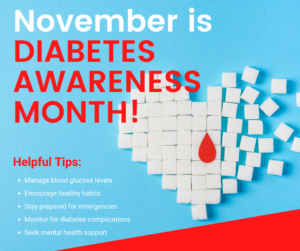
For the aging American population, a first-time, dilated ophthalmic exam to screen for and treat eye diseases early on that are related to gradually worsening eyesight is important. For the 30 million Americans living with diabetes, the need for a comprehensive eye exam yearly is critical.
Approximately one-third of Americans with diabetes (Type 1, Type 2, or gestational) can develop diabetic retinopathy, a progression of the disease caused by high blood sugar levels damaging the back of the eye (retina). Diabetic retinopathy is the leading cause of blindness in working-age adults, and left undiagnosed and untreated, this complication can cause vision loss or even irreversible blindness.
As both a public health challenge and crisis, the Centers for Disease Control and Prevention (CDC) has determined that less than two-thirds of diabetics visit an eye specialist for their recommended annual dilated ophthalmic exams. Rates of these necessary screening visits are even lower among children and adolescents with diabetes. Alarmingly, less than half of youth with Type 2 diabetes receive an exam within six years of being diagnosed with diabetes.
In honor of Diabetic Eye Disease Awareness month in November, the American Academy of Ophthalmology (AAO) pauses to recognize the public health implications of diabetes on eye worldwide. Diabetes as the leading cause of preventable blindness in the U.S. among adults ages 20 to 74, as well as the fifth most common cause of preventable blindness globally. This month, the AAO spotlights diabetes, both for the gravity of its global impact, as well as its ties to preventive eye health practices.
Take note of what the CDC recommends in eye health practice to diabetics, both for control of vision problems and to slow worsening eyesight.
• Get a dilated eye exam at least once a year to enable your eye specialist to spot any problems early, while they’re most treatable.
• Keep your blood sugar levels in your target range as much as possible. Over time, high blood sugar not only damages blood vessels in your eyes; it can also cause large fluctuations in your glasses or contact lens prescriptions.
• Keep your blood pressure and cholesterol levels in your target range to lower your risk for eye diseases and vision loss. Also good for your health in general!
• Quit smoking. Quitting lowers your risk for diabetes-related eye diseases and improves your health in many other ways too.
• Get active. Physical activity protects your eyes and helps you manage diabetes.
• Ask your doctor for a referral to diabetes self-management education and support (DSMES) services. People who receive less diabetes education are twice as likely to get diabetic retinopathy as people who receive more education.
• Educate your family and friends: Preventing vision loss and blindness is a leading public health challenge. Get yearly dilated eye exams to prevent and slow the rate of vision decline!
Schedule your first-time or recurring dilated eye exam with UNC Ophthalmology by contacting 984-974-2020.
